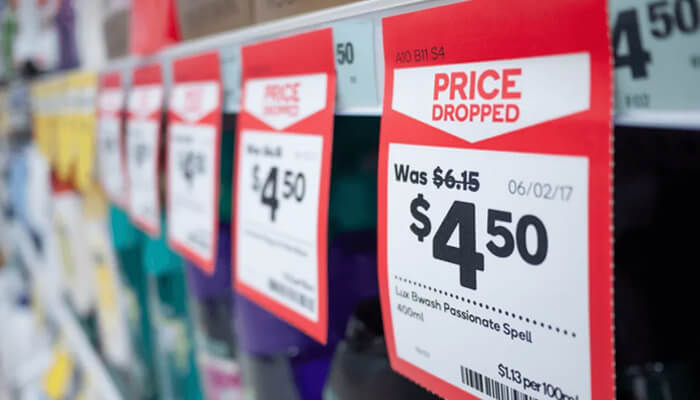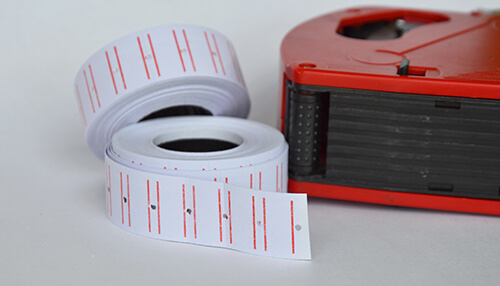As an entrepreneur or small business owner, you must think carefully about displaying prices for your products and services. Pricing your products and packages correctly from the get-go is critical to your business’s success. Pricing strategy isn’t just about how much you charge for a product or service; it’s also about the type of price label you use. Any business owner understands that exceptional pricing strategies are vital to long-term success. The cost of pricing products can be daunting. You want your merchandise to stand out, but you also need to stay within a budget. Many innovative and cost-effective solutions may help you achieve your goals without breaking the bank. Let’s look at four price tag solutions available for you.
1. Paper Price Tags
Paper price tags are still equally used in small businesses and big box stores due to their low cost. Paper tags have several disadvantages that could factor into business owners choosing another solution. Some of the cons of paper price tags include the following:
1. Time-consuming – Making new paper price tags for new products or replacing outdated ones is time-consuming.
2. Don’t hold up well – Paper disintegrates easily in warm climates, causing the tags to wrinkle.
3. Difficult to clean – Paper price tags are impossible to clean and need to be replaced when soiled.
4. Unflattering appearance – Between difficulty cleaning and disintegrating, paper price tags may not be visually appealing to your customers.
2. Sticker Price Tags
If you’re looking for an easy and simple pricing solution, sticker price tags are for you! Just pull the sticker off the roll and put it on the product. They come in many colors, sizes, and sticker prices.
The sticker price retail labels are easy to clean or quickly replace if necessary. They also catch the shopper’s eye and don’t interfere with the product.
3. Plastic Price Tags
Plastic price tags are less time-consuming than paper ones, but are they less impersonal? Some types of plastic retail tags use PVC labels, which use rubber or vinyl. PVC labels are great for outdoor items because the material is durable and lightweight.
Plastic price tags can be customized to include the store’s logo as well as the pricing information. However, it’s important to note that the polyvinyl chloride used in PVC labels can emit toxic chemicals.
4. Handwritten Price Tags
Some small business owners prefer to create handwritten price tags to create a more personal feel. Similar to paper price tags, handwritten ones are extremely labour-intensive.
Furthermore, they can be difficult for the customer to read if the penmanship is poor. Handwritten tags also run the risk of a typo or a pricing mistake.
When it comes to pricing your products and services, you have a lot of options. Each strategy has its advantages and disadvantages, so it’s up to you to decide which is best for your business. Does that seem stressful? It doesn’t have to be! Keeping a few key factors in mind allows you to choose the pricing strategy that helps your business thrive.



